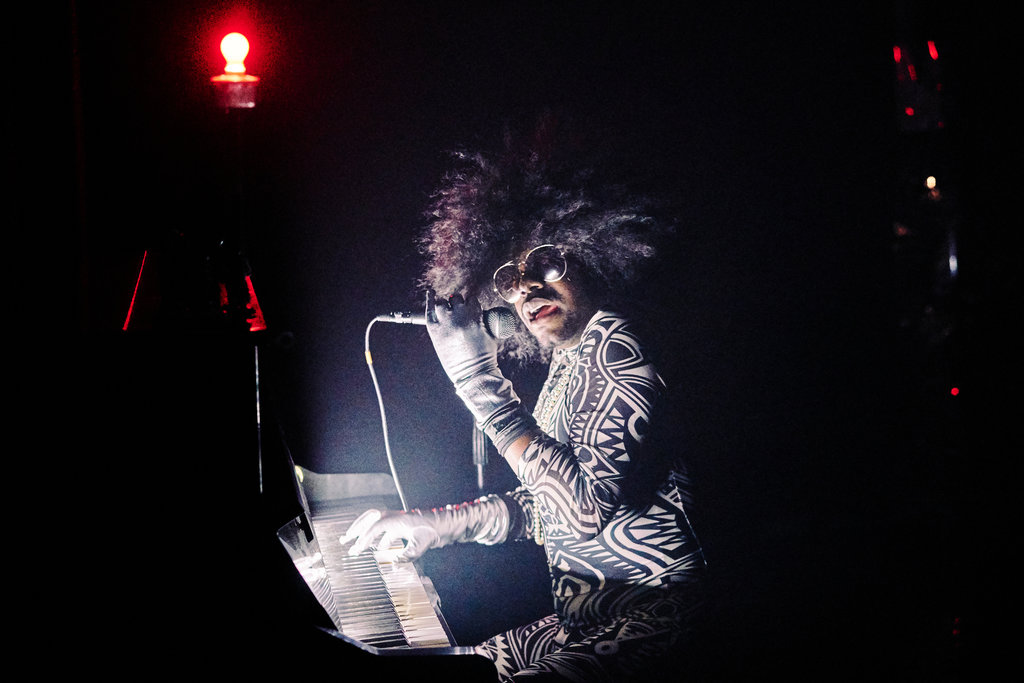The Attenborough centre felt like a fitting venue for Jaamil Olawale Kosoko’s Seancers, as a centre for the creative arts on Sussex University campus. The stage was set with a huge silver X, reminiscent of Malcom X, old vintage cotton undresses, creepily suspended from the ceiling, influential black culture books decorating the walls and a messy array of sparkles, sex toy masks and a skull adorned the stage.
Kosoko appeared, in a silky hooded cape and “draped” himself around the audience. His voice is so smooth, I could listen to this man speak all day and night. His work depicts colonialisms devastating impact on the lives of black people. The struggles that devastation inflicts globally in the present day is, as in the unlawful killing of black people, often at the hands of the police, a predominating force present in Kosoko’s performance. The souls of those stolen from Africa become entwined in Kosoko’s séance with those loved ones close to Kosoko, and those of the audience, as he “hold a space for the dead”
What ensues is a heady, dreamscape of eroticism, black culture, confusion, cavorting, that brings with it a sense of madness, and confusion as the past wraps itself around the present, in scenes comparable to day of the dead rituals. The dream like quality to the performance is blissfully accentuated with the talentedlive score from Bessie award winning composer Jeremy Toussaint-Baptiste.
The themes of black resistance, feminism, art, culture and history, are throughout and this felt at times like a very academic undertaking, the works roots firmly placed in texts such as Howardena Pindell’s film “free white and 21”, Audre Lorde’s haunting poem “Power” and a civil rights activists interview with Ruby Sales, from a recent radio broadcast. Hence, why the Attenborough Centre felt like the perfect choice for the art of Kosoko to be enacted. There was a strong sense of 1960’s experimental theatre/student activism about the work, but in a new and exciting mixed media format.
A powerful and evocative spokesperson/medium for the dead, Kosoko art form oozes eroticism, the confusion of mental distress, and attempts to demonstrate the troubling that the grief of centuries of black trauma has produced. The call to communicate with our dead was powerful and the ritual of “holding a space for the dead” despite the confusion that ultimately brings, felt an important and healing process we all should undertake. I commend the ethnographical nature of the production and feel I bore witness to a powerful act of individual catharsis, which looked exhausting but ultimately cleansing.







